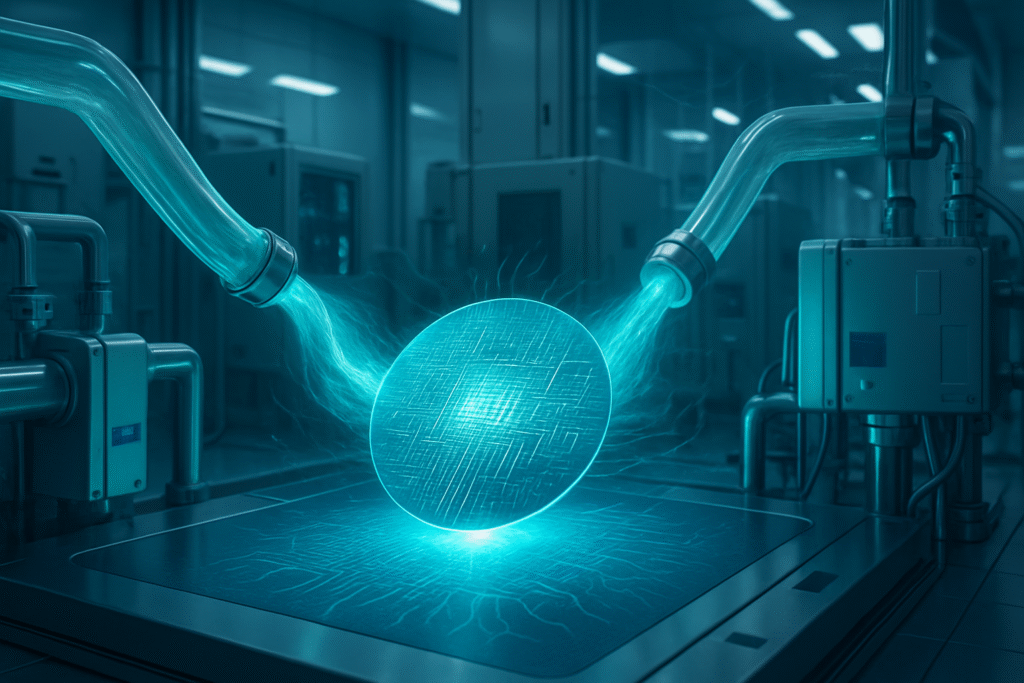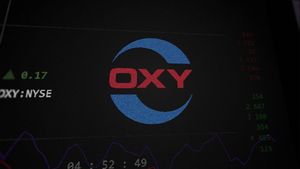
In the relentless pursuit of ever more powerful artificial intelligence, the spotlight often falls on groundbreaking algorithms, vast datasets, and innovative chip architectures. However, an often-overlooked yet critically foundational element is quietly undergoing a revolution: the supply of ultra-high purity (UHP) gases essential for semiconductor manufacturing. These advancements, driven by the imperative to fabricate next-generation AI processors with unprecedented precision, are not merely incremental improvements but represent a crucial frontier in enabling the AI revolution. The technical intricacies and market implications of these innovations are profound, shaping the capabilities and trajectory of AI development for years to come.
As AI models grow in complexity and demand for computational power skyrockets, the physical chips that run them must become denser, more intricate, and utterly flawless. This escalating demand places immense pressure on the entire semiconductor supply chain, none more so than the delivery of process gases. Even trace impurities, measured in parts per billion (ppb) or parts per trillion (ppt), can lead to catastrophic defects in nanoscale transistors, compromising yield, performance, and reliability. Innovations in UHP gas analysis, purification, and delivery, increasingly leveraging AI and machine learning, are therefore not just beneficial but absolutely indispensable for pushing the boundaries of what AI processors can achieve.
The Microscopic Guardians: Technical Leaps in Purity and Precision
The core of these advancements lies in achieving and maintaining gas purity levels previously thought impossible, often reaching 99.999% (5-9s) and beyond, with some specialty gases requiring 6N, 7N, or even 8N purity. This is a significant departure from older methods, which struggled to consistently monitor and remove contaminants at such minute scales. One of the most significant breakthroughs is the adoption of Atmospheric Pressure Ionization Mass Spectrometry (API-MS), a cutting-edge analytical technology that provides continuous, real-time detection of impurities at exceptionally low levels. API-MS can identify a wide spectrum of contaminants, from oxygen and moisture to hydrocarbons, ensuring unparalleled precision in gas quality control, a capability far exceeding traditional, less sensitive methods.
Complementing advanced analysis are revolutionary Enhanced Gas Purification and Filtration Systems. Companies like Mott Corporation (a global leader in porous metal filtration) are at the forefront, developing all-metal porous media filters that achieve an astonishing 9-log (99.9999999%) removal efficiency of sub-micron particles down to 0.0015 µm. This eliminates the outgassing and shedding concerns associated with older polymer-based filters. Furthermore, Point-of-Use (POU) Purifiers from innovators like Entegris (a leading provider of advanced materials and process solutions for the semiconductor industry) are becoming standard, integrating compact purification units directly at the process tool to minimize contamination risks just before the gas enters the reaction chamber. These systems employ specialized reaction beds to actively remove molecular impurities such as moisture, oxygen, and metal carbonyls, a level of localized control that was previously impractical.
Perhaps the most transformative innovation is the integration of Artificial Intelligence (AI) and Machine Learning (ML) into gas delivery systems. AI algorithms continuously analyze real-time data from advanced sensors, enabling predictive analytics for purity monitoring. This allows for the early detection of minute deviations, prediction of potential problems, and suggestion of immediate corrective actions, drastically reducing contamination risks and improving process consistency. AI also optimizes gas mix ratios, flow rates, and pressure in real-time, ensuring precise delivery with the required purity standards, leading to improved yields and reduced waste. The AI research community and industry experts have reacted with strong enthusiasm, recognizing these innovations as fundamental enablers for future semiconductor scaling and the realization of increasingly complex AI architectures.
Reshaping the Semiconductor Landscape: Corporate Beneficiaries and Competitive Edge
These advancements in high-purity gas supply are poised to significantly impact a wide array of companies across the tech ecosystem. Industrial gas giants such as Air Liquide (a global leader in industrial gases), Linde (the largest industrial gas company by market share), and specialty chemical and material suppliers like Entegris and Mott Corporation, stand to benefit immensely. Their investments in UHP infrastructure and advanced purification technologies are directly fueling the growth of the semiconductor sector. For example, Air Liquide recently committed €130 million to build two new UHP nitrogen facilities in Singapore by 2027, explicitly citing the surging demand from AI chipmakers.
Major semiconductor manufacturers like TSMC (Taiwan Semiconductor Manufacturing Company, the world's largest dedicated independent semiconductor foundry), Intel (a leading global chip manufacturer), and Samsung (a South Korean multinational electronics corporation) are direct beneficiaries. These companies are heavily reliant on pristine process environments to achieve high yields for their cutting-edge AI processors. Access to and mastery of these advanced gas supply systems will become a critical competitive differentiator. Those who can ensure the highest purity and most reliable gas delivery will achieve superior chip performance and lower manufacturing costs, gaining a significant edge in the fiercely competitive AI chip market.
The market implications are clear: companies that successfully adopt and integrate these advanced sensing, purification, and AI-driven delivery technologies will secure a substantial competitive advantage. Conversely, those that lag will face higher defect rates, lower yields, and increased operational costs, impacting their market positioning and profitability. The global semiconductor industry, projected to reach $1 trillion in sales by 2030, largely driven by generative AI, is fueling a surge in demand for UHP gases. This has led to a projected Compound Annual Growth Rate (CAGR) of 7.0% for the high-purity gas market from USD 34.63 billion in 2024 to USD 48.57 billion by 2029, underscoring the strategic importance of these innovations.
A Foundational Pillar for the AI Era: Broader Significance
These innovations in high-purity gas supply are more than just technical improvements; they are a foundational pillar for the broader AI landscape and its future trends. As AI models become more sophisticated, requiring more complex and specialized hardware like neuromorphic chips or advanced GPUs, the demands on semiconductor fabrication will only intensify. The ability to reliably produce chips with feature sizes approaching atomic scales directly impacts the computational capacity, energy efficiency, and overall performance of AI systems. Without these advancements in gas purity, the physical limitations of manufacturing would severely bottleneck AI progress, hindering the development of more powerful large language models, advanced robotics, and intelligent automation.
The impact extends to enabling the miniaturization and complexity that define next-generation AI processors. At scales where transistors are measured in nanometers, even a few contaminant molecules can disrupt circuit integrity. High-purity gases ensure that the intricate patterns are formed accurately during deposition, etching, and cleaning processes, preventing non-selective etching or unwanted particle deposition that could compromise the chip's electrical properties. This directly translates to higher performance, greater reliability, and extended lifespan for AI hardware.
Potential concerns, however, include the escalating cost of implementing and maintaining such ultra-pure environments, which could disproportionately affect smaller startups or regions with less developed infrastructure. Furthermore, the complexity of these systems introduces new challenges for supply chain robustness and resilience. Nevertheless, these advancements are comparable to previous AI milestones, such as the development of specialized AI accelerators (like NVIDIA's GPUs) or breakthroughs in deep learning algorithms. Just as those innovations unlocked new computational paradigms, the current revolution in gas purity is unlocking the physical manufacturing capabilities required to realize them at scale.
The Horizon of Hyper-Purity: Future Developments
Looking ahead, the trajectory of high-purity gas innovation points towards even more sophisticated solutions. Near-term developments will likely see a deeper integration of AI and machine learning throughout the entire gas delivery lifecycle, moving beyond predictive analytics to fully autonomous optimization systems that can dynamically adjust to manufacturing demands and environmental variables. Expect further advancements in nanotechnology for purification, potentially enabling the creation of filters and purifiers capable of targeting and removing specific impurities at a molecular level with unprecedented precision.
In the long term, these innovations will be critical enablers for emerging technologies beyond current AI processors. They will be indispensable for the fabrication of components for quantum computing, which requires an even more pristine environment, and for advanced neuromorphic chips that mimic the human brain, demanding extremely dense and defect-free architectures. Experts predict a continued arms race in purity, with the industry constantly striving for lower detection limits and more robust contamination control. Challenges will include scaling these ultra-pure systems to meet the demands of even larger fabrication plants, managing the energy consumption associated with advanced purification, and ensuring global supply chain security for these critical materials.
The Unseen Foundation: A New Era for AI Hardware
In summary, the quiet revolution in high-purity gas supply for semiconductor manufacturing is a cornerstone development for the future of artificial intelligence. It represents the unseen foundation upon which the most advanced AI processors are being built. Key takeaways include the indispensable role of ultra-high purity gases in enabling miniaturization and complexity, the transformative impact of AI-driven monitoring and purification, and the significant market opportunities for companies at the forefront of this technology.
This development's significance in AI history cannot be overstated; it is as critical as any algorithmic breakthrough, providing the physical substrate for AI's continued exponential growth. Without these advancements, the ambitious goals of next-generation AI—from truly sentient AI to fully autonomous systems—would remain confined to theoretical models. What to watch for in the coming weeks and months includes continued heavy investment from industrial gas and semiconductor equipment suppliers, the rollout of new analytical tools capable of even lower impurity detection, and further integration of AI into every facet of the gas delivery and purification process. The race for AI dominance is also a race for purity, and the invisible architects of gas innovation are leading the charge.
This content is intended for informational purposes only and represents analysis of current AI developments.
TokenRing AI delivers enterprise-grade solutions for multi-agent AI workflow orchestration, AI-powered development tools, and seamless remote collaboration platforms.
For more information, visit https://www.tokenring.ai/.





